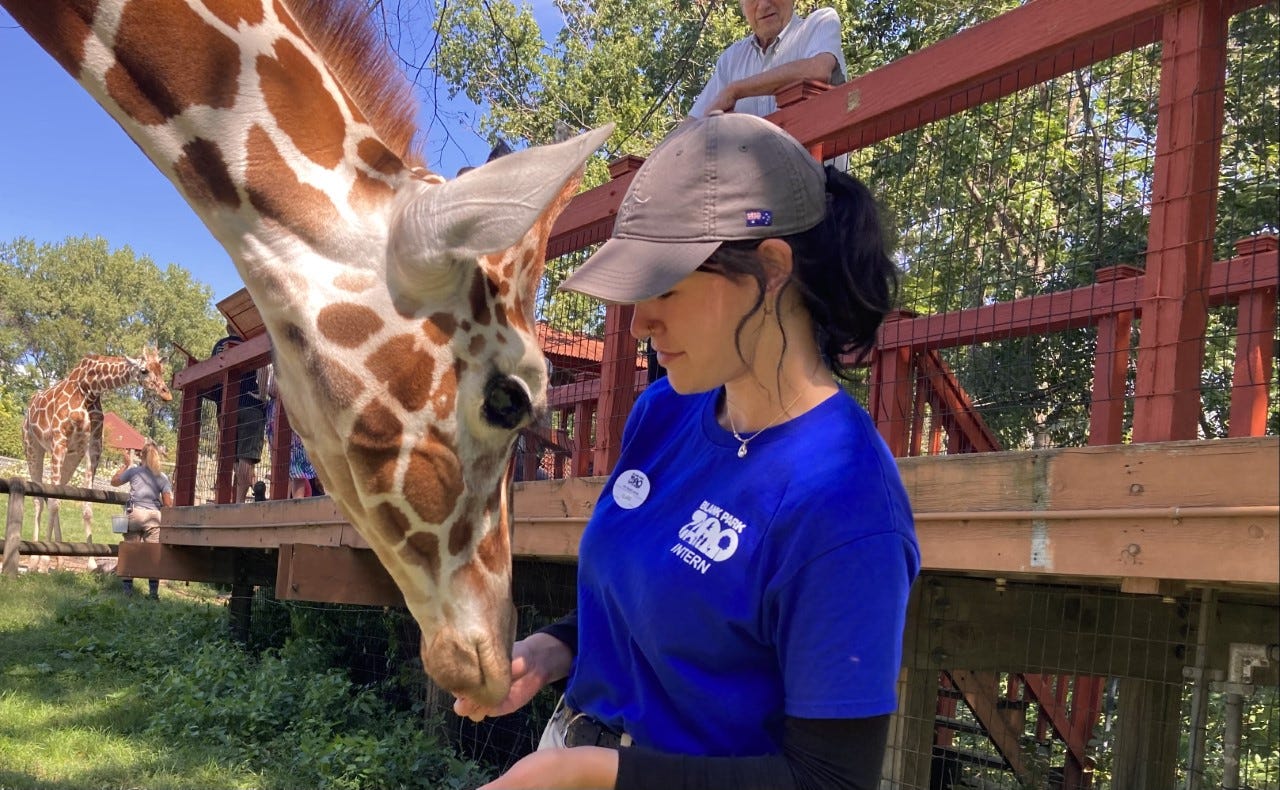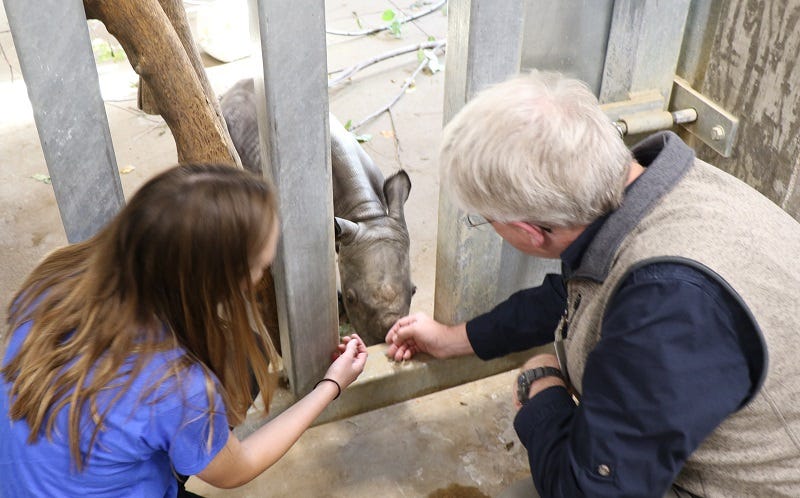There's a science behind the zoo ... and you can be part of it.
Every day people are working to save the environment and its inhabitants, but the most important work starts with education. Here’s how Drake University is changing animal lives, and how you can, too.

Climate change is occurring at alarming rates, causing a loss in biodiversity, habitat destruction, and resource deficiencies. Not only does this directly affect human life and survival, it doesn’t bode well for our co-inhabitants who are forced to migrate to unusual places that are often unsafe for them. Some aren’t as lucky to relocate, and eventually reach endangerment.
Do not lose hope. There’s a new generation of conservators emerging, and Drake University in Des Moines, Iowa, is leading the way.
Creating a major
Drake’s thriving science department has been offering courses in animal behavior and sciences for the last 10 years. These courses prepare students for zoo work, building skill sets for many areas of conservation including ecology, wildlife management, veterinary school, and behavioral neuroscience.
Only in the last couple of years has this program been under consideration to become a permanent degree, with Professor Michael Renner its biggest advocate. He says that often, zoos receive resumes from applicants who don’t have proper preparation for the job. This is where Drake’s new program would make a difference.
“If we can help people become accomplished professionals in the fields of animal-related conservation work, we will have done a good thing,” Renner says.
Finally, in January 2023, the program was approved in partnership with the Blank Park Zoo and Ape Initiative located in Des Moines.
Why this major matters
Renner, a professor of biology and psychology, works in the Environmental Science & Sustainability department at Drake. Through his own research at zoos, he has seen the difference these types of programs make for both the students and zoos firsthand.
“Zoos provide critical conservation and environmental education, but to do that every zoo animal needs to be a healthy, well-adjusted representative of its species,” Renner says. “There’s a need for trained professionals to make sure that animals in zoos have the best lives possible and, because of that, have a full range of species-typical behaviors.”
Zoos do more than provide family entertainment as they help protect, conserve, and educate on a species when their habitats have been lost to climate-change issues or human-based habitat loss, Renner says.
“While under human care, no matter the type of facility, it’s our responsibility to make sure that animals in captivity are given the best quality of life in the same way they would have in the wild,” he says. “The best way to achieve this is through a proper education that prepares students for the task. “

Visitors make a difference in zoo life
Believe it or not, some of the most important zoo and conservation work starts with visitors. “Once a zoo visitor understands how amazing and varied the animals are, they almost automatically become an advocate for protecting the places these animals live.”
Zoos are among the most visited facilities in the United States, generating more than 22 billion dollars for the economy. They make large contributions to conservation efforts. However, none of it is possible without visitors and the connections they form with wildlife through the zoo experience.
“Once a zoo visitor has a moment where they connect with a wild animal – like playing with a seal pup through an underwater viewing window or making eye contact with a lion – they become interested in making sure that species continues to exist … and that requires protecting their environment,” Renner says. “Anything that helps people make that connection can help, such as writing about nature in a way that touches emotions or reporting about the wonders of the world’s ecosystems and the importance of protecting them.”
Zoe Sax, who double majors in Environmental Science and Zoo and Conservation Science at Drake, has seen this type of connection firsthand working as a Carnivore/Pinniped (flipper-footed creature) Keeper at Blank Park Zoo while in school.
“Direct conservation is important to help the [animal and plant] populations grow and persist, but educating the public is just as important, and something I have more chances of doing as a keeper,” Sax says. “Widespread support of conservation is often what helps move conservation forward. Additionally, educating people on animals and their conservation helps connect people with wildlife and inspires people to make change or, for the younger people, start their path into this career.”
How you can make a difference
The zoo and conservation major focuses on captive populations, providing a more in-depth understanding of the inner workings of conservation. It has an emphasis on hands-on experience, with the primary goal being to graduate fully prepared and equipped with skills for conservation-related fields.
Conservation isn’t just for those with degrees though; you can help, too. It can occur on both large and small scales. Sometimes, all it takes is planting wildflower seeds to preserve native plant species and help out our pollinator friends.
However, if you find you’d like to spend your life with animals, Sax says to start early.
“Volunteer at a local zoo if you can, or anywhere you can get animal experience. I volunteered at a nature park visitor center taking care of their turtles. It’s so much fun and once you get that hands-on experience, you have a greater appreciation learning about the topic,” Sax says. “Animal experience is a huge bonus to have on resumes if you apply to internships at a zoo.”
But don’t worry if you don’t have experience, she says. “It’s okay to start your journey once you get to college because Drake’s program is set to prepare you for success after graduating.”
To learn more about the Zoo and Conservation program at Drake, visit www.drake.edu/zoo.




